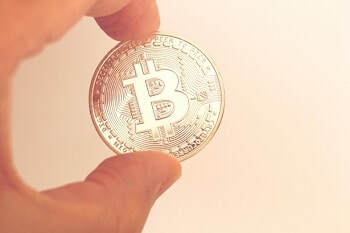Fungible
 I was reading an article in The Economist magazine recently about bitcoins and came across the term ‘non-fungible token’ (NFT) which I’ve heard repeatedly over the last little while. A few days ago, I read an online BBC news story about a popular internet meme, featuring a two-year old girl, that was sold as an NFT by her parents to a music company for about $100,000.
I was reading an article in The Economist magazine recently about bitcoins and came across the term ‘non-fungible token’ (NFT) which I’ve heard repeatedly over the last little while. A few days ago, I read an online BBC news story about a popular internet meme, featuring a two-year old girl, that was sold as an NFT by her parents to a music company for about $100,000.What the dickens does ‘non-fungible’ mean, I asked myself. And where does this word come from? (Other questions in relation to the meme could be asked, but I’ll restrain myself).
First, a ‘token’ is a unit of bitcoin cryptocurrency which is used similarly as a subway token—you buy a token (a coin-like object or card) and use it to gain entry to the subway. So then, what ‘non-fungible’ token?
The word fungible, a term from law and economics, means something that can be exchanged for something else of the same kind. For example: when you put a $50 bill into your savings account and later withdraw $50, you don’t expect to get exactly the same $50 bill as the one you deposited.
Or, a prairie farmer takes 10,000 bushels of wheat to the local great elevator and adds it to the wheat from other farmers. Someone who buys 10,000 bushels of this wheat gets 10,000 bushels of wheat regardless of whoever brought the wheat to the elevator. The farmers and the buyers are both dealing with wheat as a ‘fungible’ entity. The bill of sale is a ‘token’.
On the other hand, a watercolour painting is ‘non-fungible’. If I sold a painting for $500, the buyer would expect to get the actual painting—not just any watercolour painting worth $500.
Wikipedia tells us that a ‘non-fungible token’ (NFT) “certifies a digital asset to be unique and therefore not interchangeable. NFTs can be used to represent items such as photos, videos, audio, and other types of digital files” (https://en.wikipedia.org/wiki/Non-fungible_token).
The word fungible comes from the Proto-Indo-European (PIE) root bhrug (to enjoy), PIE bhung (to be of use, to be used), and Latin fungi (to perform; not the same fungi which is the plural of fungus).
Fungible came to English in 1818 from Latin fungibilis as a legal term meaning ‘capable of being used in place of another; capable of being replaced’. The noun fungible is from 1765.
I can’t say that I know much more about bitcoin currency or NFTs than I did before, but I now know a bit more about fungibles and non-fungibles. And, as I was writing, my wife looked over my shoulder and assured me that, not to worry, I was quite ‘non-fungible’. Whew!
Reference: Online Etymological Dictionary, https://www.etymonline.com/
https://www.merriam-webster.com/dictionary/fungible
https://www.merriam-webster.com/dictionary/token
Published on September 30, 2021 12:33
No comments have been added yet.



